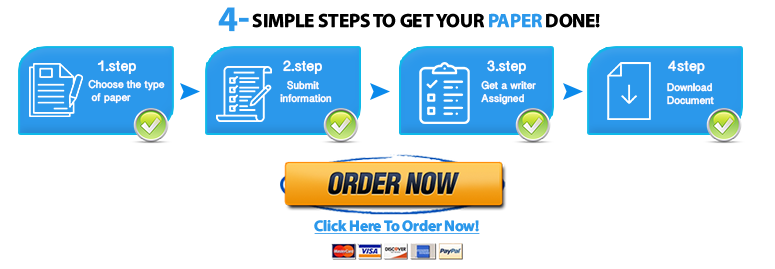Finance Investment Analysis
Please submit your assignment with complete answers and show calculations.
*** Submit plagiarism check report with your assignment*** I will do this PART.
FROM BOOK — Reilly, F., & Brown, K. (2012). Investment analysis & portfolio management (10th ed.). Mason, OH: South-Western Cengage Learning.
Save your time - order a paper!
Get your paper written from scratch within the tight deadline. Our service is a reliable solution to all your troubles. Place an order on any task and we will take care of it. You won’t have to worry about the quality and deadlines
Order Paper NowLINK TO THE BOOK
Chapter 21 – questions 1,2,4,5,6,7,8, 10 (page 813).
1. We have futures contracts on Treasury bonds, but we do not have futures contracts on individual corporate bonds. We have cattle and hog futures but no chicken futures. Explain why the market has developed in this manner. What do you think are the most important characteristics for the success of a new futures contract concept?
2. “Hedgers trade price risk for basis risk.” What is meant by this statement? In particular, explain the concept of the basis in a hedge transaction and how forward and futures contracts can be selected to minimize risk.
4. A multinational corporation is about to embark on a major financial restructuring program. One critical stage will be the issuance of seven-year Eurobonds sometime within the next month. The CFO is concerned with recent instability in capital markets and with the particular event that market yields rise prior to issuance, forcing the corporation to pay a higher coupon rate on the bonds. It is decided to hedge that risk by selling 10-year Treasury note futures contracts. Notice that this is a classic cross hedge wherein 10-year Treasury notes are used to manage the risk of 7-year Eurobonds. Describe the nature of the basis risk in the hedge. In particular what specific events with respect to the shape of the Treasury yield curve and the Eurobond spread over Treasuries could render the hedge ineffective? In other words, under what circumstances would the hedge fail and make the corporation worse off?
5. You are the chief financial officer of a large multinational company, and six months from now you will be receiving a settlement payment of $50 million, which you plan to invest in 10-year U.S. Treasury bonds. Your interest rate forecast indicates that the yield curve will drop dramatically in the next two quarters. You are considering ways that you can guard against the possible decline in interest rates before you have the funds available to invest.
a. Briefly describe the hedging strategy using the 10-year Treasury note futures contract that would provide the best protection against this possible decline in yields.
b. Suppose that six months after you have entered into a futures contract as suggested in Part a, interest rates increases in the market actually increase substantially due to an unexpected change in monetary policy. Discuss how this increase in interest rates will affect the futures position you entered into.
c. Discuss whether you would have been better off (1) with the hedge position or (2) without the hedge position in this situation.
6. You own an equally weighted portfolio of 50 different stocks worth about $5,000,000. The stocks are from several different industries, and the portfolio is reasonably well diversified. Which do you think would provide you with the best overall hedge: a single position in an index futures or 50 different positions in futures contracts on the individual stocks? What are the most important factors to consider in making this decision?
7. Since their introduction, stock index futures contracts have become very popular and are now widely traded by finance professionals. Many factors, including (1) the current price of the underlying stock index, (2) the time to contract maturity, and (3) the dividends paid to the stocks in the underlying index, will affect the settlement price of a stock index futures contract. What is the fourth primary factor involved in stock index futures contract pricing, and how does this factor affect settlement prices?
8. It is often stated that a stock index arbitrage trade is easier to implement when the stock index futures contract price is above its theoretical level than when it is below that value. What institutional realities might make this statement true? Describe the steps involved in forming the arbitrage transaction in both circumstances. To the extent that the statement is valid, what does it suggest about the ability of the stock index futures market to remain efficient?
10. Explain why the currency of Country A, whose interest rates are twice as great as those in Country B, must trade at a forward discount. If there were no difference between the spot and forward exchange rates in this interest rate environment, what arbitrage trade could be constructed to take advantage of the situation?
Chapter 22 – questions 1,2,4,5,7, 10 (page 861).
1. Straddles have been described as “volatility plays.” Explain what this means for both long and short straddle positions. Given the fact that volatility is a primary factor in how options are priced, under what conditions might an investor who believes that markets are efficient ever want to create a straddle?
2. Put-call-forward parity and range forward positions both involve the purchase of a call option and the sale of a put option (or vice versa) on the same underlying asset. Describe the relationship between these two trading strategies. Is one a special case of the other?
4. In the Black-Scholes option pricing model, there are six factors that affect the value of call options on stocks. Three of these factors include (1) the current price of the underlying stock, (2) the time to maturity for the option contract, and (3) the dividend on the stock. Identify the remaining three factors, and explain how they affect the value of call options.
5. “Although options are risky investments, they are valued by virtue of their ability to convert the underlying asset into a synthetic risk-free security.” Explain what this statement means, being sure to describe the basic three-step process for valuing option contracts.
7. Describe the condition under which it would be rational to exercise both an American-style put and call stock option before the expiration date. In both cases, comment specifically on the role that dividends play.
10. On October 19, 1987, the stock market (as measured by the Dow Jones Industrial Average) lost almost one-quarter of its value in a single day. Nevertheless, some traders made a profit buying call options on the stock index and then liquidating their positions before the market closed. Explain how this is possible, assuming that it was not a case of the traders taking advantage of spurious upward ticks in stock prices.
"Looking for a Similar Assignment? Order now and Get 10% Discount! Use Code "Newclient"




